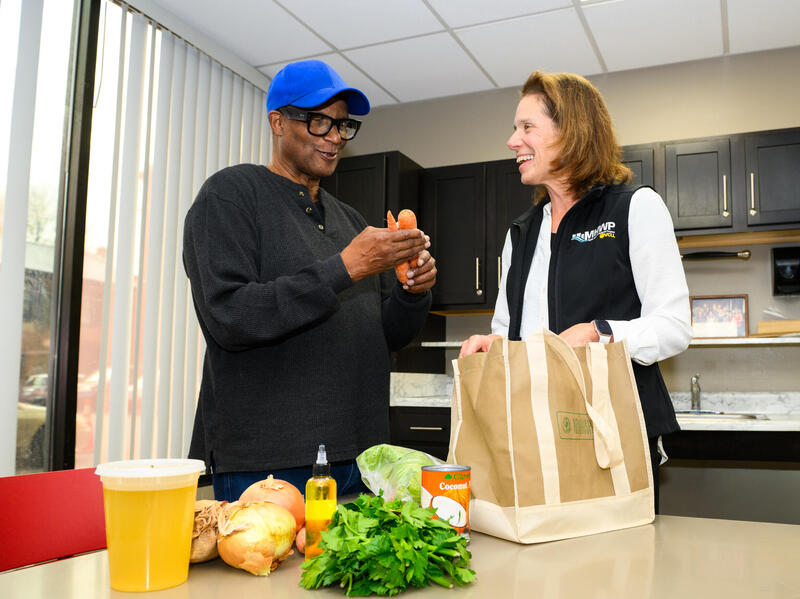
Nov. 11, 2020
Taking an integrated approach to health care, from the doctor’s office to your smartphone
Share this story
Medical school was always the game plan for Dhruv Sethi, but there were steppingstones along the way — master’s degrees in both business administration and public health as well as the founding of a company.
A 2015 Virginia Commonwealth University Honors College graduate, the 25-year-old Sethi is now a fourth-year VCU School of Medicine student and class president. Three years ago, he founded mHealth Wellness, an organization that creates mobile health technology, such as apps and websites, focused on patient education and physician tools.
“The company started off with the goal of promoting patient education in chronic diseases such as heart disease, diabetes and glaucoma,” Sethi said. “Recently, it has also taken a role in creating technology that facilitates both better interactions with patients and efficiency for physicians.”
Filling a need
Sethi started creating apps after reading a study that revealed as few as 13% of individuals with a chronic disease report they received education about their condition.
“Seeing that low of a percentage was startling. If that number can increase even a little, [it] can have significant health benefits for many,” he said.
Data shows that as education increases, so will compliance, he said. Sethi has included quizzes in his apps that help patients keep on top of their health. “We all grew up around quizzes. They are used everywhere because they are effective for long-term memory,” he said.
The company’s apps are for both Android and Apple users.
“We are in the early stages of all of this. We are continuing to grow and expand,” Sethi said.
mHealth Wellness has five apps for iPhone, with another being released soon. Three of the apps are disease related and two are physician tools.
One of Sethi’s latest endeavors is an ophthalmic medicine app, eyeRx, that is primarily for physicians and clinicians who prescribe eye-drop medication.
“It’s grown to be a pet project of mine,” said Sethi, who is applying for ophthalmology residencies to complete after his May medical school graduation. “My personal goal is to grow its use at academic centers, including VCU. If I am a resident and managing glaucoma medication regimens, I can use the app quickly to educate my patients efficiently and increase medication compliance.”
The app allows physicians to create customized handouts of eye-drop regimens for patients with diseases such as glaucoma, which requires multiple eye drops one to four times a day.
“From various physicians I’ve spoken to, he or she may spend two to three minutes writing down eye-drop regimens to ensure that patients have an understanding of how to use their medications. The app helps do this in 15 seconds or so,” he said.
Physicians are able to add in information, including everything from the number of doses per day and the color of the eye-drop cap, to which eye gets the drops and how long to take the medication. The app creates a handout with information that the physician can give to the patient.
“It is really an enjoyable project to work on because we identified a friction point in ophthalmology offices and also created a solution that makes a tangible difference,” Sethi said. “I have had interest from multiple ophthalmologists on how to integrate this into their practice.”
Throughout this process, Sethi has learned a lot about what it takes to publish an app.
“The App Store has strict guidelines for apps, especially those that are medical or health related, and initially we failed multiple times. We put our efforts into adapting our apps and became really familiar with the regulations behind published apps, and ultimately have been successful with our apps since then,” he said. “Feedback has been an important piece along the way, and I’ve been seeking feedback from physicians of different specialties. We are continuing to make improvements.”
‘The ultimate professional’
Christopher Woleben, M.D., interim senior associate dean for medical education and student affairs at the VCU School of Medicine, is impressed with Sethi and his style of leadership.
“He’s the ultimate professional,” Woleben said.
Sethi’s approach to efficient and effective health care delivery was shaped in part by his schooling. He is following in the footsteps of his brother, Ashish Sethi, M.D., a VCU medical school graduate who is now a local vascular and interventional radiologist. Dhruv Sethi earned his M.B.A. from the Robins School of Business at the University of Richmond and his M.P.H. from George Washington University. Getting the two degrees has helped him connect the importance of having an efficient health system for patient care and promoting access to care.
“If a health system works better, then the patient-provider relationship is better,” Sethi said. “I look forward to using my background to better take care of patients and [to] improving outcomes in the health care setting.”
Subscribe to VCU News
Subscribe to VCU News at newsletter.vcu.edu and receive a selection of stories, videos, photos, news clips and event listings in your inbox.







